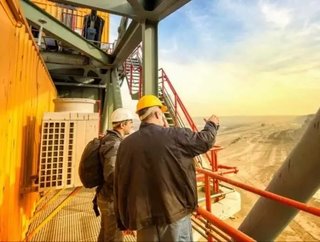Three key attributes for a successful mine start-up...

In the current financial climate, the margins for success of a mine start-up are thinner than ever before. Mine start-ups in 2016 have gone one of two ways, either they have been impeccably managed, ahead of schedule and on or under budget, or they have suffered real teething problems and difficult periods, some have even fallen seriously short of expectations and need a financial bailout.
Here are three examples of mine start-ups as highlighted by finnCap. Some good, some bad. All key in highlighting the challenges faced in mine start-ups.
Atalaya Mining – Rio Tinto Copper mine, Spain
The European copper producer Atalaya acquired the Rio Tinto Copper mine in 2007 and set out to rebuild the mine site in 2015. The rebuild process was divided into two phases, phase one – the dewatering of the ld Cerro Colorado open pit and refurbishment of the modern parts of the existing plant.
Phase two, the construction if the major expansion to the plant incorporating modern equipment – the site was first developed into a substantial operation in 1873.
Through a combined 58.8percent ownership of issued equity, through shareholders who are traders in metal commodities or specialist investors, the project needed no debt financing. Financing was secured purely through copper concentrate offtake deals.
Construction was completed in May 2016, most importantly, ahead of schedule and on budget.
And the success story doesn’t end there, production has ramped up and it is expected that there will be 9.5million tonnes of ore processed per year before the end of 2016.
Aureus Mining – New Liberty gold mine, Liberia
Aureus Mining entered the mining world in February 2011 with the goal of exploring and developing gold exploration properties in Liberia. Following a feasibility study on New Liberty back in 2012, construction of a mine started that very same year.
The goal, begin producing gold by Q4 of 2014 within a budget of around US$140m.
And so, came a long and strenuous four years for Aureus.
In 2013, the company raised US$80m in new equity in parallel with agreeing a debt package of US$100m. An additional US$16m was raised in October 2013, primarily to fund exploration work in parallel with the mine construction. This was followed by a further top-up of US$15m in April 2014.
By now the company was targeting a later first production in Q1 2015.
In 2014, a massive epidemic of Ebola was identified and the whole of Liberia was in lockdown in a bid to contain it. It wasn’t until April 2015 that it was declared over.
You can imagine the impact this had on the project, most notably the port used for the import of plant and machinery ground to a complete halt. Towards the end of the epidemic, a further US$15m had been raised to stay afloat.
In May 2016, amid environmental concerns due to a discharge of cyanide solution into the environment and the plant has in fact been shut down pending an investigation.
Four years after the start of ground clearance on the project, and with more than US$270 thrown at what was originally intended to be $US140m, the mine is still not even close to “steady-state production”.
Wolf Minerals, Hemerdon Tungsten mine, UK
The UK tungsten mine became a part of Wolf Minerals’ portfolio in 2013 following two years of approvals and permitting with the landowners and construction commenced in February 2014.
The mine itself was commissioned in 2015, but it looks like it is far from being profitable after a series of major problems including technical problems with the tungsten recoveries resulting in a recovery of around 30 percent of ore as opposed to the expected 66 percent.
Not the best of starts.
As is often the case for many mining companies, the commodity price market doesn’t often cooperate nicely. The weakness in the Tungsten market proved to be more severe than many expected and worse so, there are no signs of a recovery just yet meaning Wolf Minerals are far away from operating the mine at a profitable level – and that’s if they get the mine working satisfactorily.
But there is hope. Wolf has already started work on turning things around. The company has begun to make a series of equipment changes and modifications to navigate the technical problem hurdle. Operations are expected to be underway by mid-2017.
From a financial standpoint, the company’s major shareholder Resource Capital Funds (RCF) has continued to support it to the point where it is now by far the largest shareholder, with a 56% interest. RCF has also recently agreed to provide a £20m 12-month bridge loan to cover the turnaround period.
This financial backbone should allow the company enough time to take the mine to profitability, and fingers crossed there may even be a recovery in tungsten someday soon.
A word from our expert…
Martin Potts, mining analyst at finnCap, believes that timing is critical for a mine start-up.
“Many problems are driven by the fact that these mines were commissioned at a point in the mining cycle where prices were far lower than when the decision was taken to finance and construct the mines. However, one of the certainties about the mining sector is that commodity prices will recover as the cycle moves on.”
Three key attributes for successful start-ups…
Looking at the findings, Potts has identified three key factors for a mine start-up to be successful.
• Timing. Commissioning mines at a time of falling commodity prices will
result in stretched finances.
• High-quality major shareholders. These will be able to support the
company should it encounter problems.
• High-quality owners team. There is a critical need to recognise and
differentiate between what could be a real money-saving opportunity and
what may cripple the operation.
The October issue of Mining Global Magazine is live!
Follow @MiningGlobal
Get in touch with our editor Dale Benton at [email protected]






